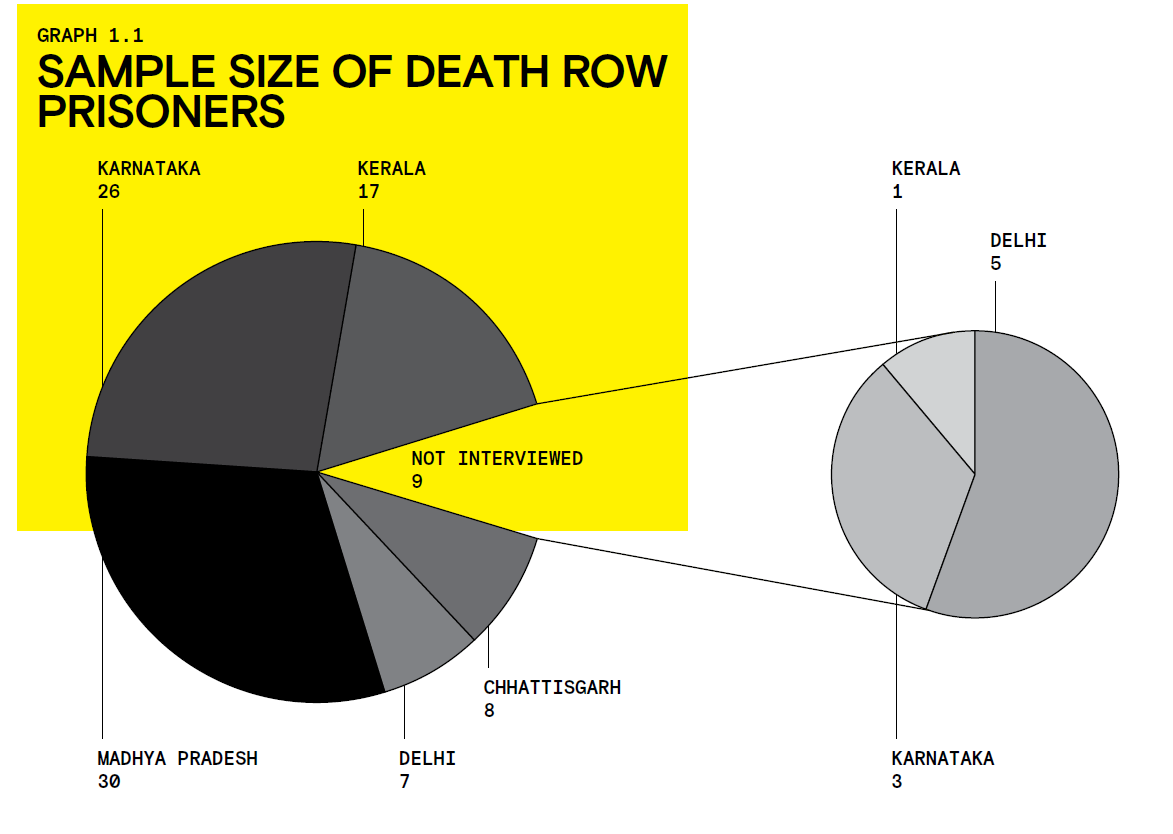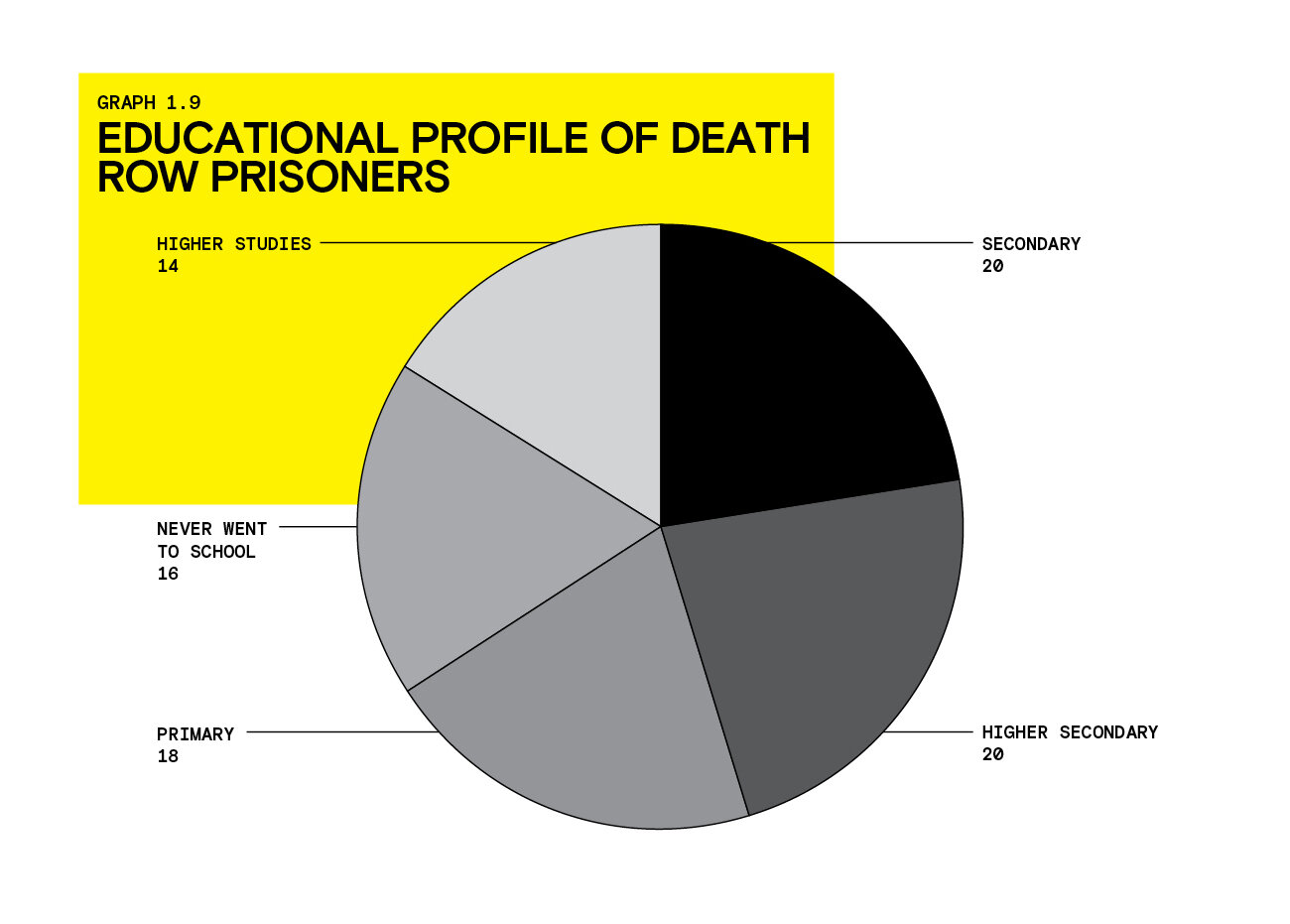Intellectual disability and the death penalty
9 out of 83 death row prisoners (approximately 11%) were diagnosed with intellectual disability (ID) Of the 9, the mercy petition of 3 prisoners had also been rejected. Over 75% prisoners were found to have deficits in intellectual functioning. While international law prohibits imposition of the death sentence on persons with mental disabilities, in the case of these nine prisoners, their disability was not even brought to the attention of the courts.
Pains of death row
Death row prisoners are treated as a separate class of prisoners and, more often than not, the violence and alienation are directly linked to their belonging to this separate class-“the living dead”. The study found that vilification in and outside the prison, particularly the media, conditions of death row incarceration, non-suicidal self injury and suicide, and death row distress comprised pains of death row and the mental and emotional agony of death row. 60% of the prisoners interviewed for the study are not on death row anymore, and went through this pain, if we consider pain as the purpose of the death penalty, needlessly.
Families of death row prisoners
Death row prisoners are not the only ones who go through this agony on a daily basis. Families of death row prisoners go through this punishment as well, who are assumed to be guilty by association. While the accused faces horrors of a different kind, families, particularly children, are left behind to face the wrath and collective condemnation of their immediate community and society. Not knowing whether their loved one is going to live or die, families deal with this ‘ambiguous loss’ without being able to grieve openly because who, after all, would mourn the loss of a death row prisoner. Their ‘disenfranchised grief’ remains unexpressed and unvalidated.
Mental health concerns among prisoners acquitted or whose sentences were commuted
Of the 88 prisoners who were interviewed, 19 were ultimately acquitted and the sentence of 33 prisoners were commuted to various terms of life imprisonment. 13 out of the 19 prisoners who are now acquitted were diagnosed with at least one mental illness, three had attempted suicide in prison. Of the 30 prisoners diagnosed with depression, 17 are now no more on death row. Of the 34 prisoners who had been at risk of suicide, 20 are not on death row anymore. Half of those who were actively contemplating suicide around the time of the interview are not on death row anymore.












